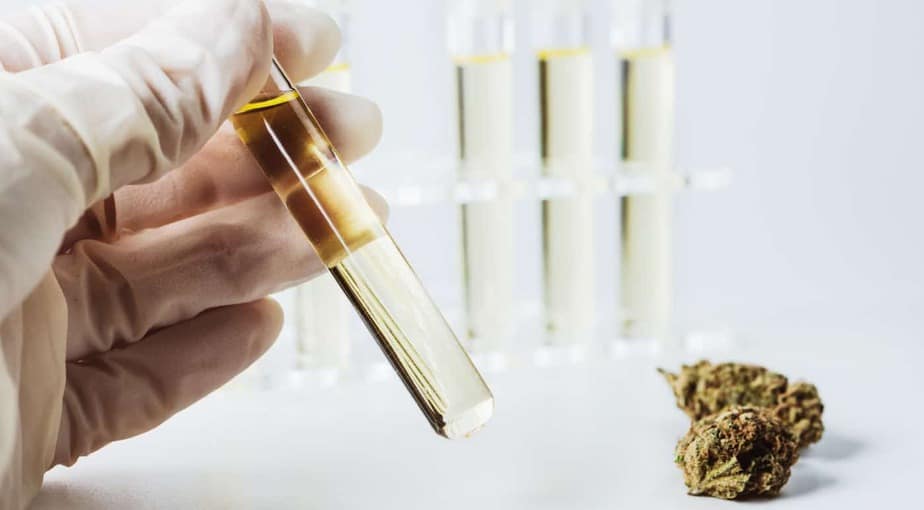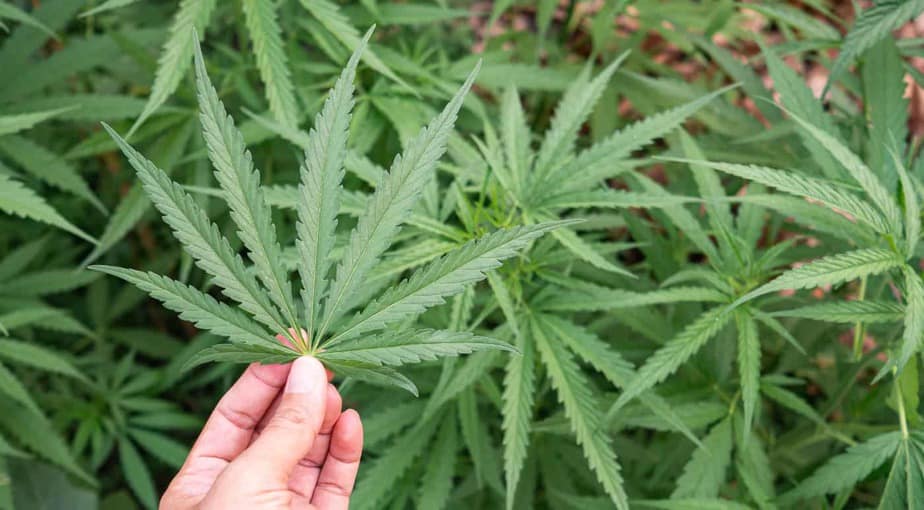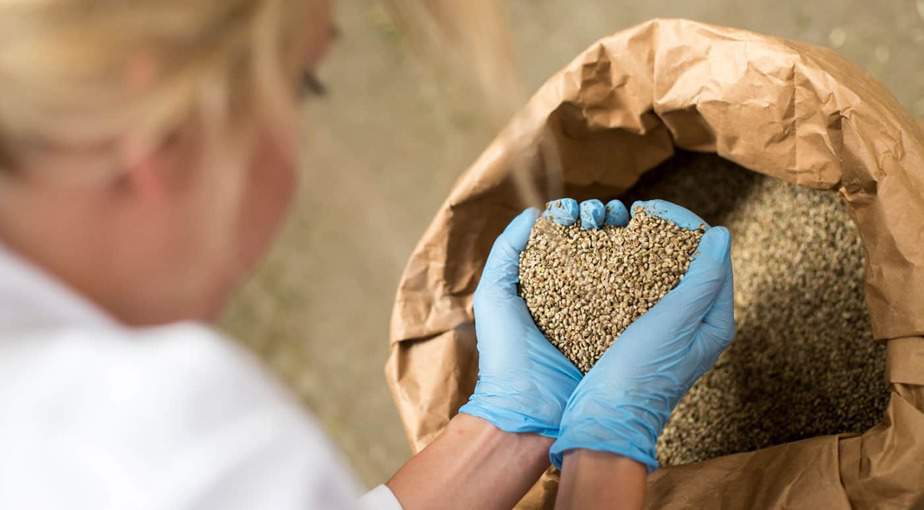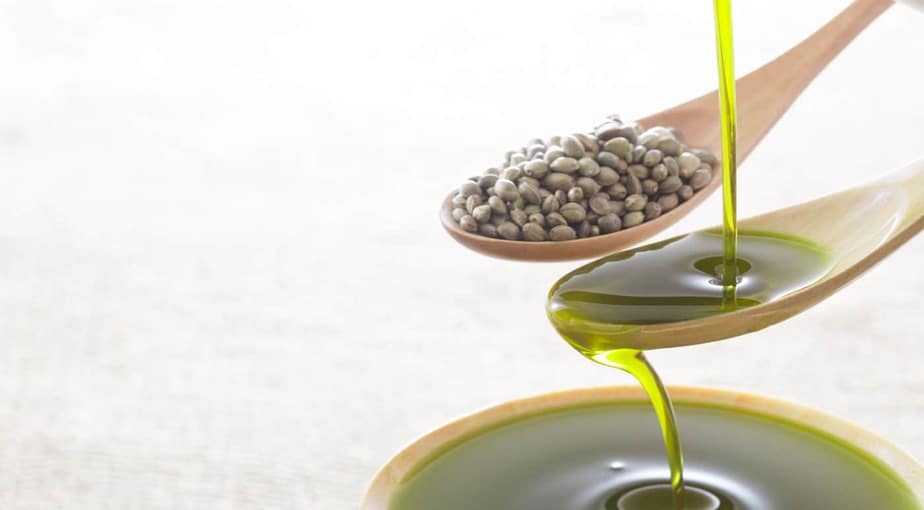CBD oil bottles now take prominent positions on nightstands, office desks, and bathroom shelves as one of the most commonly used natural solutions for anxiety, stress, sleep, and pain.
Most people have tried more than one brand on their journey towards finding the right fit, noticing that some exhibit certain effects and may even have a different taste profile.
So, this begs the question, where does this difference come from?
The difference between a high-quality CBD oil and a lower-quality oil lies mainly in the extraction method used to separate the CBD from the rest of the cannabis plant material. But how exactly is this done? And are certain methods better than others?
Let’s take a closer look at how to make CBD oil. But first, let’s look at why you might want to try using CBD oil. You can also check out our list of overall Best CBD Oil and Best CBD Gummies.
Benefits of CBD Oil

Before we dive into the methods used to extract CBD, let’s briefly go over some CBD basics. CBD, or cannabidiol, is a phytocannabinoid compound found in the Cannabis sativa plant. Cannabis contains over 100 cannabinoid molecules that are currently being studied but have shown unique beneficial properties alongside CBD.
CBD, initially studied for the improvements it caused in epileptic patients, is now being looked at for conditions such as multiple sclerosis, rheumatoid arthritis, chronic pain, fibromyalgia, anxiety, depression, and more. As opposed to the infamous THC (tetrahydrocannabinol) psychoactive cannabinoid, CBD doesn’t interfere with mental function, which has made it increasingly popular among individuals seeking a natural option for daytime use.
CBD works by binding to CB1 and CB2 receptors in the body’s own endocannabinoid system (ECS) as well as those found in the body’s periphery and in the immune system. The ability of CBD to influence and modulate on such a widespread scale is the reason behind the effects it elicits throughout the body.
For example, both CBD and THC can bind to CB1 receptors in the ECS. When CBD binds indirectly to CB1, it modifies the shape of the receptor and can reduce THC binding activity leading to a reduction of psychoactive symptoms. That is why CBD is often paired with THC to reduce the feelings of “getting high.” When CBD binds to CB2 receptors on immune cells, it alters the cell function and induces anti-inflammatory properties.
CBD’s abilities to bind to TRPV1 receptors and serotonergic receptor 5HT1A also show promise in producing anti-anxiety and anti-inflammatory results. While researchers are still working through complex and spotty regulations to get a clearer understanding of the full potential of CBD, the results thus far have made CBD oil one of the most popular plant medicines.
Hemp vs. Marijuana

When you purchase your CBD oil, mostly likely you are buying a product that was manufactured with industrial hemp. Thanks to the Farm Bill of 2018, farmers in the U.S. are allowed to cultivate and sell hemp products that contain no more than 0.3% THC. This makes hemp a federally legal product in all states, while leaving the legality of marijuana (all cannabis plants that contain more than 0.3% THC) up to individual states.
In addition to the legal aspects of making CBD products from hemp rather than marijuana, most companies choose to use hemp for CBD extraction simply because you get a higher yield. Since hemp plants are bred to have higher concentrations of CBD, it only makes sense that companies would choose the more efficient approach by utilizing hemp.
How to Make CBD Oil

Now that you have a good understanding of CBD’s health benefits, let’s move on to how CBD oil is made. There are three main ways that companies and DIY CBD oil enthusiasts extract CBD. Solvent and CO2 extraction are often the methods of choice for companies, while carrier oil CBD extraction is a method often favored by consumers. Each method has its own pros and cons, which we will look at in detail below.
Solvent Extraction
There are two main types of solvent extraction—ethanol and hydrocarbon. Ethanol and alcohol are common solvents used in CBD extraction. For a solvent extraction, hemp is picked, dried, and soaked in isopropyl alcohol. Since CBD is a lipophilic compound, which means it loves oil, it “sticks” to oily substances and can be separated when mixed with alcohol.
Once all the hemp plant matter is removed, the mixture is heated slowly at a low temperature to evaporate out the alcohol. Then the extract must be heated to decarboxylate and activate the cannabinoids, like CBD. Otherwise, the cannabinoids will stay in their inactive, natural form and won’t produce any effects when consumed.
Hydrocarbon extraction involves using propane or butane to extract the CBD compound. There is some controversy surrounding the safety of using butane and propane as extraction solvents, since they can pose harm if it’s done improperly. The yield of butane extraction can be higher than CO2 extraction, which is one of the benefits of this method. Also, compared to ethanol extraction, which can damage the plant aromas and flavors, hydrocarbon extraction preserves them.
Ethanol extraction also has the potential of leaving chlorophyll extracts, which can alter the flavor profile and color of the final oil. Either solvent method, while capable of producing a high yield, does carry the potential for leaving trace elements of itself. Thus, products that are made from solvent extracts are more affordable, but carry higher risk.
CO2 Extraction
CO2 extraction is the gold standard in the cannabis industry and is used by brands that want to create the highest-quality premium products. Supercritical CO2 extraction is the most common form because of the flexibility it provides. We are most familiar with CO2 in its gaseous form. However, with certain pressure and temperature conditions, CO2 can turn into a liquid and at the “supercritical” point, act as both a liquid and a gas.
Supercritical CO2 extraction can separate the terpenes and cannabinoids from the rest of the unwanted plant material, producing extremely high yields of purity. Just as with the solvent extraction method, you would need to decarboxylate the CBD first to activate it, which would happen prior to the implementation of the supercritical CO2.
Businesses that are interested in extracting specific cannabinoids or in making CBD isolate products with 99% purity are definitely implementing CO2 extraction.
The cost of the equipment and the technical abilities needed to run the machines are the main roadblocks for a lot of smaller businesses who may want to use CO2 extraction. However, with such low risks for contamination and such potent end results, CO2 extraction methods for producing CBD oil will only gain more footing as the industry expands.
Carrier Oil Extraction

The carrier oil method is by far the simplest and easiest method for extracting CBD. You can find a ton of recipes online that will walk you through the steps needed to make your own version if you’re interested. As mentioned earlier in the article, since CBD is an oil-loving compound, it naturally clings to oily substances and can be easily absorbed this way.
MCT oils, such as coconut and olive oil, are popular carrier oils used for extraction. Once the hemp plant is decarboxylated, it is mixed with the carrier oil and heated in a double boiler to allow the cannabinoids to infuse into the oil.
Carrier oil extraction results in a natural and safe CBD oil, although potency and plant residue contamination is higher than other methods. If you’re curious about making your own full-spectrum CBD oil at home, the carrier oil extraction method would be a great option to experiment with once you’ve chosen your hemp and carrier oil.
